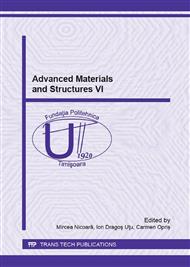p.1
p.8
p.14
p.20
p.27
p.33
p.43
p.49
Thermal Analysis to Optimize and Control the Cast Iron Solidification Process
Abstract:
The cooling curve and its derivatives display patterns that can be used to predict the characteristics of a cast iron. The effects of melting, superheating and holding in an acid lined coreless induction furnace were explored, as they affect the role of preconditioning and / or inoculation to restore solidification with low eutectic undercooling. Increased chill (iron carbides amount) in the experimental irons correlates well with certain thermal analysis parameters, such as the degree of eutectic undercooling. Preconditioning of the molten base iron before tapping led to improved solidification parameters in both untreated and inoculated irons as measured by the most significant thermal analysis cooling curve events. A double treatment incorporating preconditioning with inoculation improved the thermal analysis parameters, and consequently, the quality of the cast iron. If standard Ca-FeSi alloys do not have sufficient inoculation potential, the addition of the inoculant enhancing alloy (S, O and oxy-sulphides forming elements) will greatly enhance inoculation, well illustrated by changes to the thermal analysis parameters. A newly defined Inoculation Specific Factor [inoculation effect / inoculant consumption which led to that beneficial effect ratio] of different alloys is illustrated by thermal analysis, with good correlation with microstructural characteristics.
Info:
Periodical:
Pages:
14-19
Citation:
Online since:
August 2016
Authors:
Price:
Сopyright:
© 2016 Trans Tech Publications Ltd. All Rights Reserved
Share:
Citation:


